#Architecture Visualization London
Explore tagged Tumblr posts
Text
Affordable Architectural Services in Birmingham, UK.
Silicon EC UK Limited where we turn dreams into reality through innovative Architectural CAD Drawing Services United Kingdom. With years of experience and a passion for creativity, we are committed to delivering exceptional architectural solutions tailored to meet our clients' unique needs. We work closely with our client from the initial brainstorming session to the final delivery, the project head oversaw the entire process from inception to completion.

Visit Us Our Website :
#Architectural CAD Drawing Services United Kingdom#Architectural Site Plan London#Architecture Shop Drawing Liverpool#Architecture Interior Work UK#Architecture Landscape London#Architecture Visualization London#CAD Interior Designers United Kingdom#Architectural CAD Design United Kingdom#2D CAD Services UK#CAD Construction Services UK#Architectural Engineering Services#Architectural CAD Design Services#Architectural 3D Modeling Services#Architectural Engineering Company#Outsource Architectural CAD Services#Architectural CAD Drafting Services#Architectural Interior Design Services#Architectural Design and Drawing Services#Architectural Landscape Planning Services#Revit Architecture Services#Revit Architectural Engineering Services#2D Architectural Design and Drafting Services
0 notes
Text
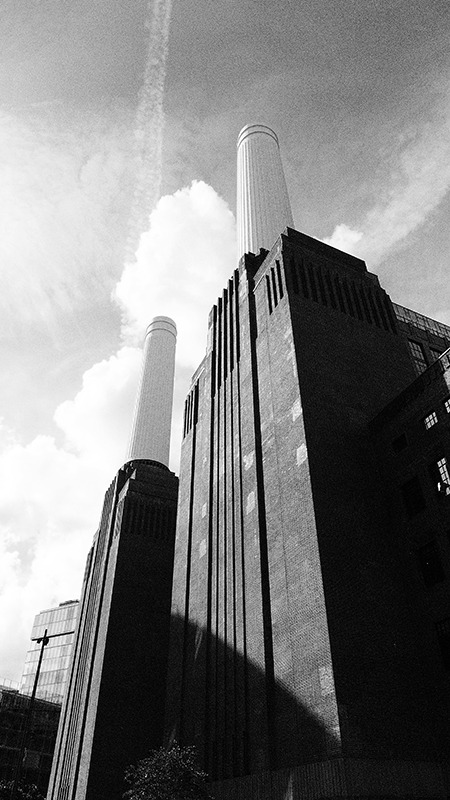
Battersea Power Station, London. Sunday, 13 August 2023.
115 notes
·
View notes
Text
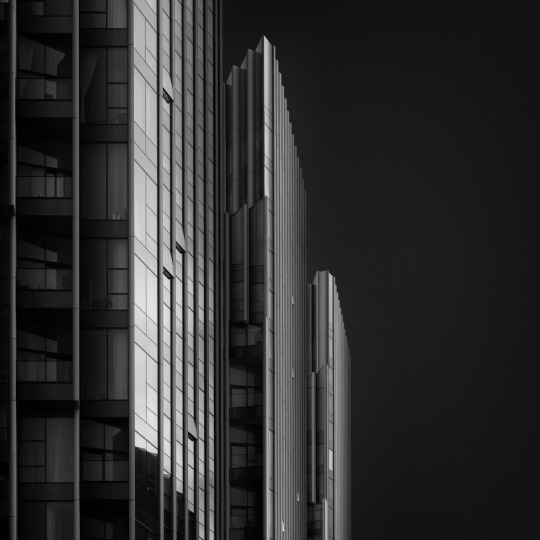
Some beauty on the mundane
#black and white photography#fine art#photography#architecture#black and white#fine art photography#city of london#london#monochrome#fine art photographer#architecture art#architectural details#modern architecture#artists on tumblr#art photography#fine art prints#my art#modern art#visual arts#pamelaaminou
28 notes
·
View notes
Text
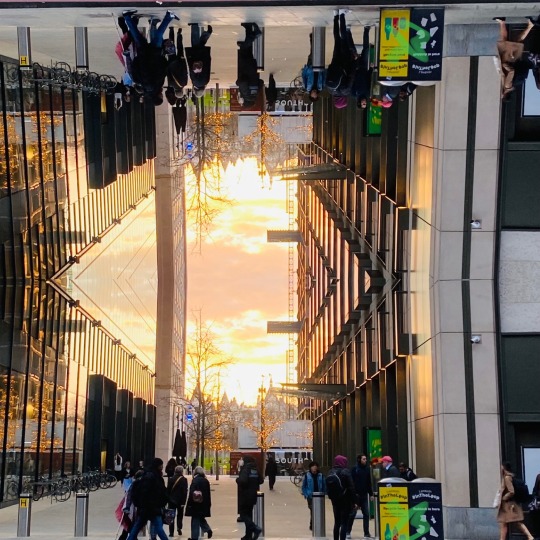

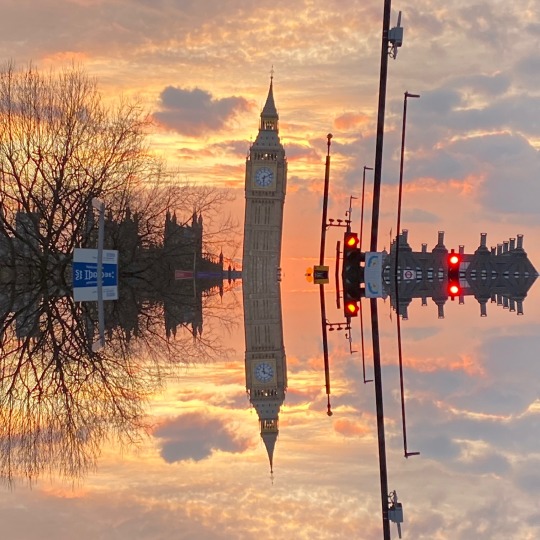

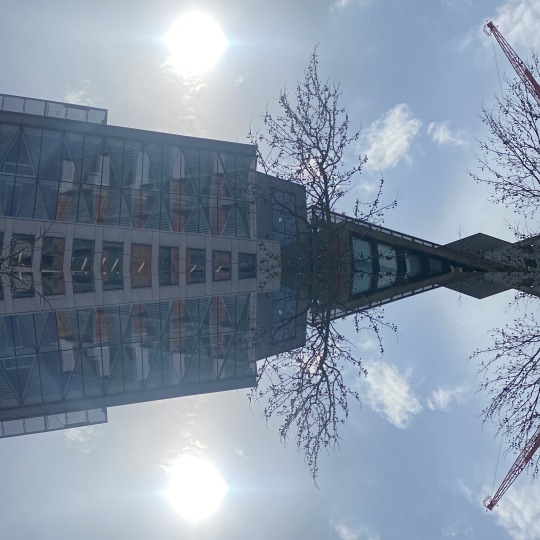
March Madness Reflections
#trillnoir#london#art#england#photography#life is art#black artist#yamnbananas#architecture#travel destinations#places to visit#travel photography#visual art#big ben#robin hood#reflections
3 notes
·
View notes
Text
Visual Journal #6 - Barbican Centre
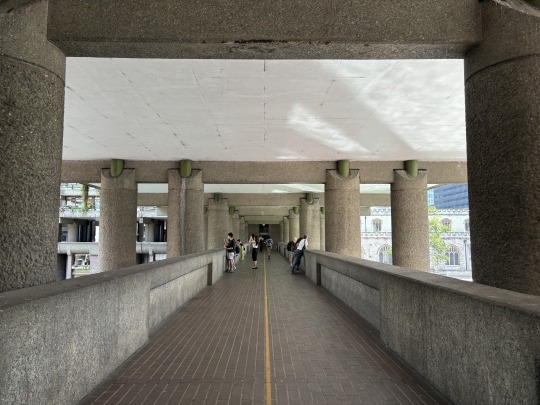

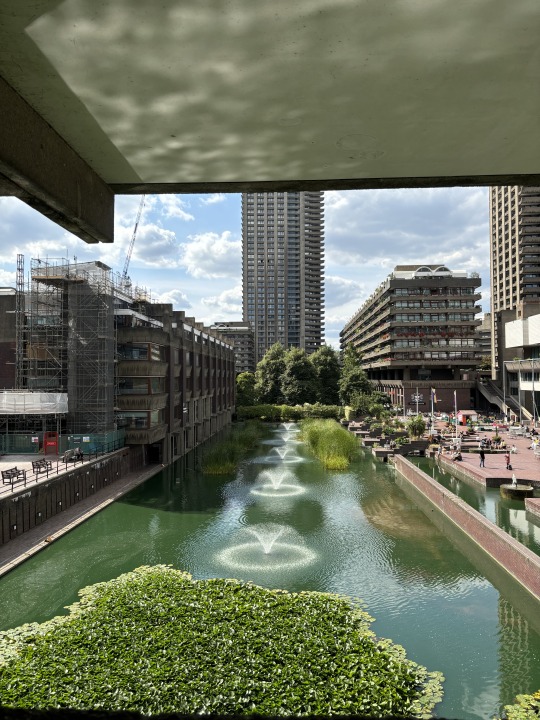
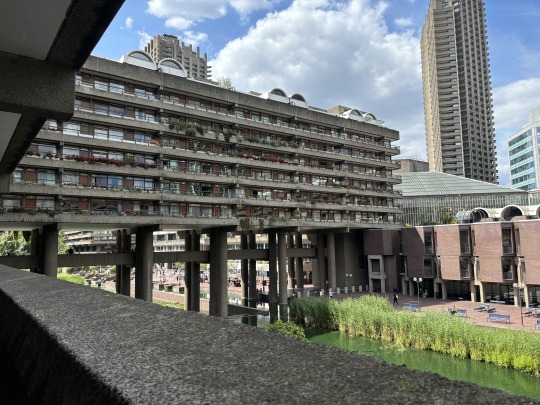
I’m not a massive fan of brutalist architecture, but I wanted to take a moment to appreciate the Barbican Centre. I took these pictures when I visited London last summer, and I wanted to go to the Barbican Centre because it’s one of the filming locations for Harry Styles’ “As It Was” music video. Despite the dull color palette, the sunny weather actually made it look inviting. Additionally, the location is much bigger in person, so it was nice to walk around there.
0 notes
Text

“... There is no job and no life that will force you to be flexible like art. One day I´m in my atelier working on dark portraits and the next I´m designing a futuristic cityview for a promotion in amsterdam… ”
Working digitally always feels like cheating to me, unless, like in this case, you switch between digital and analogue, improving both.
———————————————
“Amsterdam 2100”
Rendered image
Digital/ analogue merged
#city of london#art space#artichokes#art of living#city of bones#artfollowers#artisticdiscovery#artdelarue#cityscapes unlimited#visual arts#renderzone#street graffiti#pencils academy#گرافیست#mbada#love ink#strada_urbana#art#Creative#artsy#architecture#plenair#perspective
0 notes
Text
How to Get Architectural Visualization Services in London?
Architectural visualization is a powerful tool that can help you bring your design ideas to life. By following the tips in this blog post, you can find the right architectural visualization company in London to help you create the perfect visualization for your project. Read the blog: Architectural Visualization Services in London
1 note
·
View note
Text




Emperor Shah Jahan’s wine cup, 1657,
The cup is shaped like a gourd with the handle carved into the head of a ram. The base features acanthus leaves radiating out from a lotus flower which is raised to form a pedestal for the cup.
The different features of the cup reflect the variety of cultural and artistic influences that were welcomed at the Mughal court. Persian in their cultural background and Indian by adoption, the Mughals were also open to new ideas from the West.
Jesuits at the Mughal court, entertaining futile ideas of converting an Empire, were welcomed for their learning; ambassadors and merchants for their exotic gifts and promises of trade.
Craftsmen-adventurers were especially welcomed for their skills and knowledge of unfamiliar technologies.
The use of a gourd form for the body of the cup is Chinese in inspiration, while the lotus petals and sensitivity of animal portraiture are characteristic features of Hindu art. The ideas of the pedestal support and the use of acanthus leaves are also European in origin and parallel similar elements in the decoration of Mughal architecture during Shah Jahan's reign.
Yet for all its eclecticism, with features from China, Iran, Europe and India, the art of the Mughals achieved a brilliant unity. This unity is perfectly exemplified in the jade cup which entered Shah Jahan's treasury in the last year of his reign and now provides such strong visual support to the legend of the dynasty's splendour.
Made in the Imperial workshops
White nephrite jade,
Length: 18.7cm, Width: 14cm
© Victoria and Albert Museum, London
#art#history#design#style#sculpture#antiquity#collectors#cup#wine#jade#white#poetry#mughal#imperial#v&a museum#ram#gourds#shah jahan#lotus
68 notes
·
View notes
Note
Hi! Do you have tips on describing architecture? (Art nouveau style in particular)
Writing Notes: Art Nouveau Architecture

Art Nouveau - (French for ‘new art’) style of art that flourished between about 1890 and 1910 throughout Europe and the United States.
It is characterized by its use of a long, sinuous, organic line and was employed most often in architecture, interior design, jewelry and glass design, posters, and illustration.
It was a deliberate attempt to create a new style, free of the imitative historicism that dominated much of 19th-century art and design.
About this time, the term Art Nouveau was coined in Belgium by the periodical L’Art Moderne to describe the work of the artist group Les Vingt and in Paris by S. Bing (byname of Siegfried Bing), who named his gallery L’Art Nouveau. The style was called:
Jugendstil in Germany,
Sezessionstil in Austria,
Stile Floreale (or Stile Liberty) in Italy, and
Modernismo (or Modernista) in Spain.
The distinguishing characteristic of Art Nouveau is its undulating asymmetrical line, often taking the form of:
flower stalks and buds,
vine tendrils,
insect wings, and
other delicate and sinuous natural objects;
the line may be elegant and graceful or infused with a powerfully rhythmic and whiplike force.
Characteristics of Art Nouveau
Here are a few examples of the characteristics of Art Nouveau work in the visual arts, decorative arts, and architecture.
Natural shapes: Art Nouveau work is full of biomorphic shapes—or non-geometric, organic forms—that resemble flowers, insects, and other elements of the natural world.
Ornamental lines: Art Nouveau artworks—like the Paris Metro signs—frequently incorporate curvy, sinuous lines that mimic the swirling forms of plants or stems.
Flat, decorative patterns: In paintings and graphic arts, Art Nouveau artists tended to emphasize the flatness of the medium by creating small, densely packed patterns, like William Morris’s fabrics and wallpaper patterns, and the gilded motifs in Gustav Klimt’s paintings.
Byzantine influences: Artists like Gustav Klimt, with his mosaic-like gilded paintings, and Alphonse Mucha, who often painted the subjects of his paintings like Byzantine queens, drew influence from the ornate, embellished style of Byzantine art. Decorative artist Louis Comfort Tiffany presented his first Tiffany lamps in a Byzantine-influenced chapel at the World’s Colombian Exhibition in Chicago.
IN ARCHITECTURE and the other plastic arts, the whole of the three-dimensional form becomes engulfed in the organic, linear rhythm, creating a fusion between structure and ornament. Architecture particularly shows this synthesis of ornament and structure; a liberal combination of materials—ironwork, glass, ceramic, and brickwork—was employed, for example, in the creation of unified interiors in which columns and beams became thick vines with spreading tendrils and windows became both openings for light and air and membranous outgrowths of the organic whole. This approach was directly opposed to the traditional architectural values of reason and clarity of structure.
PUBLICATIONS such as The Grammar of Ornament (1856) by British architect and theorist Owen Jones (1809–1874), advocated nature as the primary source of inspiration for a generation of artists seeking to break away from past styles. The unfolding of Art Nouveau’s flowing line may be understood as a metaphor for the freedom and release sought by its practitioners and admirers from the weight of artistic tradition and critical expectations.
AFTER 1910, Art Nouveau appeared old-fashioned and limited and was generally abandoned as a distinct decorative style. In the 1960s, however, the style was rehabilitated, in part, by major exhibitions organized at the Museum of Modern Art in New York (1959) and at the Musée National d’Art Moderne (1960), as well as by a large-scale retrospective on Beardsley held at the Victoria & Albert Museum in London in 1966. The exhibitions elevated the status of the movement, which had often been viewed by critics as a passing trend, to the level of other major Modern art movements of the late 19th century. Currents of the movement were then revitalized in Pop and Op art. In the popular domain, the flowery organic lines of Art Nouveau were revived as a new psychedelic style in fashion and in the typography used on rock and pop album covers and in commercial advertising.
Examples of Art Nouveau Style in Architecture
Sagrada Familia, Antoni Gaudí: In 1883, Antoni Gaudí took over the construction of Barcelona’s Sagrada Familia basilica when architect Francisco de Paula del Villar y Lorzano resigned from the job. Though the project is still not completely finished, you can see Gaudí’s influence in the cathedral’s facade, accented with naturalistic moldings that almost look like they’re melting.
The Old England Building, Brussels, Belgium: Designed by architect Paul Saintenoy, the Old England building was constructed in 1899 and is considered one of Brussels’s Art Nouveau gems. The former department store now houses the Museum of Musical Instruments. Fittingly, the exterior is adorned with multiple panels showing musical phrases, as well as the standard Art Nouveau touches such as a floral motif and swirling iron details.
Casa Fenoglio-Lafleur, Turin, Italy: It was designed by architect Pietro Fenoglio in 1902 and it became his private residence. Fenoglio’s “home studio” was created to be an aesthetic model of the Art Nouveau style. Its most prominent features are the polychrome glass and intricate wrought iron bow windows, and a sinuous overhang above the terrace. The building’s history is rich; soon after the building was finished, the architect and his family left the house and sold it to a French businessman named Lafleur. He lived there until his death and it was passed on to La Benefica, an orphanage and charity in Turin. It survived bombing during World War II but then went into a state of disrepair. In the 1990s it was sold to a private client who restored it carefully to its original splendor and now it is home to private residences and some office space.
Majolikahaus, Vienna, Austria: Architect Otto Wagner was a key figure in the reinvention of Vienna at the turn of the 20th century. One of his most beloved works is the Majolikahaus apartment building, which was completed in 1898 and is decorated with a vibrant floral motif. The façade is comprised entirely of ceramic tiles known as majolica.
Casa Batlló, Barcelona, Spain: Gaudí brought his exuberant take on Art Nouveau to Barcelona, creating many of the city’s architectural landmarks. Casa Batlló, situated on the Passeig de Gràcia, is one of his best-known works and features allusions to the legend of St. George and the dragon. Its exterior is sheathed in colorful pieces of broken ceramics, while the roof is covered in scalelike tiles.
Sources: 1 2 3 4 5 6 7 8 9 ⚜ More: References ⚜ Writing Resources PDFs
Choose which of these references are most suitable, considering the setting of your story, if historical accuracy is a high priority. Hope this helps with your writing!
#anonymous#art nouveau#architecture#writing reference#writeblr#dark academia#spilled ink#literature#writers on tumblr#writing prompt#writing inspiration#history#writing ideas#creative writing#art#writing resources
76 notes
·
View notes
Photo

Soldier and Society in Roman Egypt: A Social History
This is a highly recommended book for anyone who wants to learn more about Roman Egypt. It examines the role a Roman soldier played in Egypt from the reign of Augustus to Diocletian.
For many years, there have been many studies done on the Roman army. Many of the general studies have been popular, however, the more narrowly focused aspects of the Roman army have not gained as much attention. This book focuses on what it was like to be a soldier in Roman Egypt. Richard Alston, Professor of Roman History at the University of London, explores the cultural, economic, and legal aspects of a soldier’s life in this province. It gives readers a new insight into Roman Rule in Egypt after the time of the Pharaohs had long since passed. It is targeted at scholars and general readers alike.
This book is a good overview of the Roman army in Egypt from Augustus to Diocletian. In the first chapter, the author introduces the current state of the field. Roman military historians like Spiedel and Bierly have assumed the goals and ultimate role of militaries have been constant throughout history. Richard Alston criticizes this assertion and reminds us that we cannot assume that the Roman army behaved like modern armies. Alston seeks to identify “what the army was for, what the soldiers did, who the soldiers were and how the army related to the civilian population” (6). He argues that the Roman army in Egypt was organized similarly to other provinces. Furthermore, to a degree, every province had an exclusive cultural record. Chapters Two through Six examine aspects such as where the Roman legions were stationed in Egypt, how soldiers were recruited and how they retired, soldiers’ and veterans’ legal status in Roman Egypt, their daily activities, and how this impacted the Egyptian economy. Each chapter outlines the scholarship for these issues and how they can be improved. In the seventh chapter, Alston focuses on how soldiers interacted with civilians in the village of Karanis in the Fayum. He chose Fayum in northwestern Egypt because it was there that many veterans and soldiers settled. Generations of military families trace their ancestry there, too. Roman soldiers and veterans enjoyed a privileged lifestyle and belonged to the upper level of society. They interacted with the civilians and even married into their families. Alston concludes with the claim that the veterans stationed in Karanis were not the foremost in Romanization. However, it remained a relatively large village despite the minority of Romans.
Chapter Eight is brief and talks about the army reforms of Diocletian and the impact it had on the Roman army in Egypt. Chapter nine is a final chapter that summarizes Alston’s conclusions about Roman Egypt with how the army had an impact compared to other provinces such as Britain. He analyzes this from the evidence at the Vindolanda fort near Hadrian’s wall.
There are two detailed appendices, one offering a significant evaluation of the documentary evidence for each cohort and legion stationed in Egypt and the other reviewing the archaeological evidence for the Roman army stationed in Egypt. The illustrations of five forts in this section provide the reader with helpful visuals of Roman architecture.
This is a seminal work and is highly recommended. The conclusions in each section of the book vary depending on the available evidence. Military historians and general audiences alike will benefit from it. This book is different from other works on Roman Egypt because it focuses on the role of the Roman army in that time. Roman Egypt gives us insight into how the land of the Nile changed after the pharaohs, and this book is a perfect addition.
Read More
⇒ Soldier and Society in Roman Egypt: A Social History
46 notes
·
View notes
Text
Architectural CAD Drawing Services United Kingdom

Silicon EC UK Limited is a leading provider of Architectural CAD Drawing Services in the United Kingdom, offering cutting-edge solutions to architects, engineers, and construction professionals. With a commitment to precision and innovation, we specialize in creating detailed and accurate CAD drawings that cater to diverse architectural projects.
Choose Silicon EC UK Limited for Architectural CAD Drawing Services that transcend expectations, setting new benchmarks in the architectural design landscape of the United Kingdom.
For More Details Visit our Website:
#Architectural CAD Drawing Services United Kingdom#Architectural Site Plan London#Architecture Shop Drawing Liverpool#Architecture Interior Work UK#Architecture Landscape London#Architecture Visualization London#CAD Interior Designers United Kingdom#Architectural CAD Design United Kingdom#2D CAD Services UK#CAD Construction Services UK#Architectural Engineering Services#Architectural CAD Design Services#Architectural 3D Modeling Services#Architectural Engineering Company#Outsourcing Architectural CAD Services#Architectural CAD Drafting Services#Architectural Interior Design Services#Architectural Design Drawing Services#Architectural Landscape Planning Services#Revit Architecture Services#Revit Architectural Engineering Services
0 notes
Text
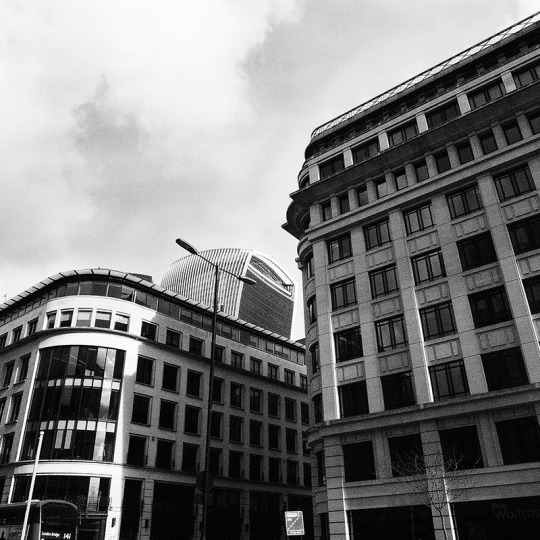
20 Fenchurch St / The Walkie Talkie, London. Saturday 24 February 2024.
18 notes
·
View notes
Text
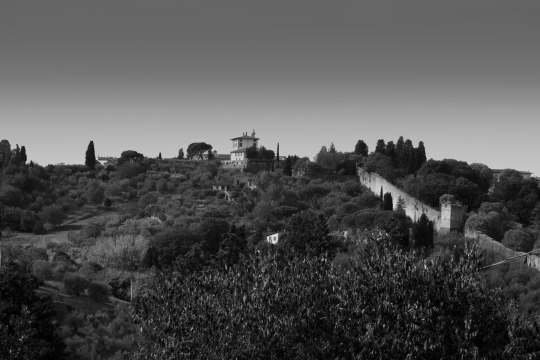
Under the Tuscan sun
#black and white photography#photography#fine art#black and white#architecture#fine art photography#city of london#london#monochrome#fine art photographer#artists#my art#fine art prints#art#visual arts#art photography#blackandwhite#black & white#black and white photographer#landscape photographer
40 notes
·
View notes
Text

A Discovery of Witches Season 2: A Darker, Richer Narrative
If you thought A Discovery of Witches was just another fantasy romp with a bit of historical flair, buckle up for Season 2—this ride gets delightfully more treacherous. Based on Deborah Harkness’s All Souls Trilogy, the show kicked off with a seductive blend of magic, academia, and some good old-fashioned supernatural skullduggery. But with its sophomore season, it doesn’t just dip its toes into darkness—it dives headfirst into the murky waters of power struggles, betrayal, and Elizabethan angst. The result? A more prosperous, textured narrative that wraps around you like a cloak on a chilly London night, refusing to let go.
Power and Betrayal: The Core of Season 2
This season isn’t content with picking up where the first left off—it’s a full-blown transformation. Power dynamics take center stage; with stakes so high, you’ll need a ladder to catch your breath. In a world where every glance, whisper, and seemingly innocuous gesture could be a precursor to betrayal, the relentless pursuit of control gives the season its teeth. Whether safeguarding ancient secrets or simply trying to survive another day, the characters are pushed to their limits, leaving you glued to the screen, wondering who will crack under the pressure first.
From Modernity to Mystery: The Haunting Atmosphere of Elizabethan London
Say goodbye to the sleek, modern settings of Season 1—this time, we’re strolling through the gritty, shadow-laden streets of Elizabethan London. The production design team has outdone themselves, crafting an environment where every alleyway feels like it’s hiding something sinister. With dim lighting and claustrophobic sets, the atmosphere is laced with palpable tension. It’s a visual feast that perfectly complements the season’s darker tone, making you feel like danger lurks around every corner—and honestly, it probably does.
A Walk Through Time: The Immersive Historical Detail
For the history buffs out there, Season 2 is a love letter to the past, filled with all the pomp and peril you’d expect from the era. The Elizabethan setting isn’t just a backdrop; it’s a living, breathing character in its own right. Every detail pulls you deeper into this world, from the meticulously crafted costumes to the period-accurate architecture. This historical immersion doesn’t just serve the aesthetics—it enriches the entire narrative, grounding the fantastical elements in a world that feels as real as your own. Unless you know something we don’t, except for the witches and vampires?
The Dark Evolution of Matthew Clairmont
Matthew Clairmont’s past comes back to haunt him with a vengeance, and Matthew Goode’s performance is captivating. He expertly navigates the fine line between restrained intensity and explosive emotion, bringing the character to life with smoldering intensity and magnetic terror. It’s a masterclass in understated menace that makes for some compelling viewing.
Love and Power: The Shifting Dynamics of Matthew and Diana
The relationship between Matthew and Diana remains the beating heart of the series, but in Season 2, it’s fraught with tension from external threats and an evolving power struggle. Diana is no longer the hesitant scholar we met in Season 1—she’s coming into her own, challenging Matthew in ways that shake the foundations of their relationship. The patriarchal backdrop of Elizabethan society adds another layer of complexity, making their love story as much about power as it is about passion. It’s a push and pull that keeps the drama sizzling, and you’ll find yourself invested in every charged exchange.
Blending Fact with Fiction: Historical Figures in the Plot
One of the season’s most delightful tricks is its seamless blending of historical figures with its fictional narrative. Queen Elizabeth I and Christopher Marlowe are more than name-drops—they’re integral to the plot, adding a layer of authenticity that enriches the story. Their interactions with Matthew and Diana aren’t just for show; they’re pivotal to the unfolding drama, offering some of the season’s most electrifying moments. This blending of fact and fiction grounds the supernatural elements in history and sets the series apart from other contemporary fantasy offerings.
A Delicate Balance: Romance and the Supernatural
A Discovery of Witches has always balanced romance with its supernatural elements, and Season 2 is no different. The romantic tension between Matthew and Diana is as intoxicating as ever, but it never overshadows the show’s broader mythos. Instead, the romance enhances the narrative, adding an emotional depth that complements the dark intrigue at the heart of the plot. It’s a careful dance between the heart and the supernatural, and the show pulls it off with aplomb.
Star Performances: Matthew Goode and Teresa Palmer
Matthew Goode and Teresa Palmer continue to anchor the show with stellar performances. Goode brings Matthew Clairmont to life with a smoldering intensity and magnetic terror, while Palmer’s portrayal of Diana Bishop is a revelation. She embodies the character’s transformation with grace and strength, creating an electric dynamic that crackles with every scene. The supporting cast also shines, each actor bringing something unique to the table, further enriching the narrative’s tapestry.
A Visual Feast: The Cinematic Brilliance of Season 2
Visually, Season 2 is a triumph. The cinematography is nothing short of cinematic, with each shot meticulously crafted to enhance the story’s mood and tone. The interplay of light and shadow, the rich color palettes, and the precise camera angles all work harmoniously to create a world that is as visually compelling as it is narratively rich. It’s the kind of show where you could pause at any moment and find a frame worthy of hanging on your wall—a testament to the care and craft that’s gone into every aspect of its production.
Fan and Critic Reactions: Embracing the Darker Narrative
Season 2 has struck a chord with fans and critics alike. The darker, more intricate narrative has been widely praised, with many appreciating the show’s boldness in deepening its themes and expanding its world. The shift to the gritty realism of Elizabethan London has been a particular highlight, adding a fresh dynamic that keeps the series from stagnating. Critics have lauded the show for its character development, atmospheric tension, and historical detail, solidifying its place as a standout in the fantasy genre. It’s a season that doesn’t just continue the story—it elevates it, pushing the boundaries of what a fantasy series can be.
Building on a Solid Foundation: How Season 2 Outshines the First
While Season 1 laid the groundwork, Season 2 takes it to new heights. The progression in tone, plot, and character arcs is evident in every frame, with the creators intent on building something more ambitious and complex. The historical setting, darker themes, and more intense character dynamics contribute to a fresh yet familiar season—a continuation of the story, but one willing to take risks and challenge its audience in new ways.
Delving into Darkness: The Weight of Season 2
The thematic weight of Season 2 is undeniable. It’s not just a stylistic shift—it’s a narrative evolution that delves into the darker corners of its characters’ psyches and the world they inhabit. The exploration of power, betrayal, and control resonates deeper, making the stakes feel higher and the choices more consequential. This isn’t just about good versus evil—it’s about survival, legacy, and lengths to protect what one loves. It’s a season that engages the heart and the mind, leaving you pondering its themes long after the credits roll.
Season 2’s Triumph: A Captivating Blend of Fantasy and History
Ultimately, Season 2 of A Discovery of Witches is a triumph. It’s a masterful blend of fantasy and history, romance and intrigue, all wrapped up in a visually stunning package. The darker, richer narrative pulls you in and refuses to let go, offering an experience as intellectually stimulating as it is emotionally engaging. Whether you’re here for the history, the romance, or the supernatural spectacle, Season 2 delivers on all fronts, leaving you eagerly awaiting what the series has in store next.
#tv series review#tv show review#review#season review#a discovery of witches#diana bishop#matthew de clermont#netflix#tv review#adow#writerblr#writeblr#writers on tumblr#writing#teresa palmer#matthew goode#television#tv
44 notes
·
View notes
Text











Athenian Architecture
The Antiquities of Athens by Scottish archaeologist James "Athenian" Stuart (1713-1788) and British architect Nicholas Revett (1720-1804), originally published 1762-1830, contains five volumes. Printed in London by German-born John Haberkorn, this was to be his best-known work.
James Stuart and his friend Nicholas Revett embarked on a journey to Greece in 1751. Their mission was to record and measure antiquities, a task no one had accurately accomplished before. Despite facing numerous challenges, including threats from Turkish gangs, their unwavering dedication led to the first accurate survey of ancient Greek architecture completed between 1751 and 1754.
The illustrations in the volumes are not merely decorative; they consist of meticulously etched and engraved plates featuring buildings, maps, plans, and friezes. These illustrations are instrumental in providing a comprehensive visual survey of ancient Greek architecture, allowing readers to appreciate the precision and scale of the antiquities documented.
The particular building featured here is the Choragic Monument of Lysicrates, commonly called the Lanthorn of Demosthenes. It was built around 334 BCE and is the only surviving example of a choragic monument. This monument is situated near the eastern end of the Acropolis, one of Athens's most significant archaeological sites. In ancient Greece, a choragus was a wealthy citizen who financed a production at one of the city's festivals. The monument was originally surmounted by a bronze tripod commemorating Lysicrates’ sponsorship of the chorus that had won first prize at the City Dionysia festival.
Stuart and Revett were the first to recognize the story depicted on the frieze. It is the story of Dionysus, the god of wine and revelry, and the Tyrrhenian pirates. In the Hymn to Dionysus in the Homeric Hymns, the god is kidnapped by pirates who fail to recognize him as a god. The pirates attempt to bind him but are unsuccessful. Instead, Dionysus drives them to jump overboard. Once they’re in the water, he uses his divine gifts to turn them into dolphins, as illustrated here in the depictions of the monument's friezes.
View another post from The Antiquities of Athens.
View other Classics posts.
-- Melissa, Special Collections Undergraduate Classics Intern
#Classics#athens#greece#The Antiquities of Athens#Choragic Monument of Lysicrates#James “Athenian” Stuart#Nicholas Revett#greek mythology#greek revival#greek gods#greek architecture#greek archaeology#architecture#choragus#dionysus#baccus#pirates#mythology#ancient greek#ancient greece#ancient history#Hymn to Dionysus#homeric hymns#frieze#lysicrates#festivals#Dionysia
71 notes
·
View notes
Text
By the 1980s, some women had had enough. After decades of struggling with prams and shopping trolleys, navigating dark underpasses, blind alleyways and labyrinthine subways in the urban obstacle course mostly made by men, it was time for a different approach. “Through lived experience,” wrote the Matrix Feminist Design Co-operative, when they launched their manifesto in 1981, “women have a different perspective of their environment from the men who created it. Because there is no ‘women’s tradition’ in building design, we want to explore the new possibilities that the recent change in women’s lives and expectations have opened up.”
A case in point is the Essex Women’s Refuge. The complex, designed by a male architect, had got basic things wrong, from the shared kitchen, which was far too small, to the location of the children’s play areas, which were completely separate from the main communal areas, with no visual or aural connection for passive supervision. Matrix worked on the centre in 1992. Using what became a regular tactic, they presented the women with big cardboard models of different spaces, which they could rearrange to test out different configurations, along with using ribbon marked like a ruler to measure their existing spaces, which were added to the plans as a comparison.
“These were all simple techniques,” says Jos Boys, a founder member of Matrix, “But they made the women feel part of creating the project. A key part of everything we did was to make the language and practice of architecture more transparent and accessible to non-experts.”
Boys describes what now sounds like an unimaginable heyday of community action, participatory planning, squatting, workers’ co-operatives and technical aid centres, with public money readily available. Much of what Matrix worked on was funded by the Greater London Council under Ken Livingstone, before it was abolished in 1986 by the then prime minister, Margaret Thatcher. Their projects included the groundbreaking Jagonari women’s educational resource centre in Whitechapel, east London. Working for – and with – a group of South Asian women, Matrix ran workshops with demountable models, asked the women to bring pictures of buildings from their home countries that they liked, and took them on a “brick picnic” walk to discuss what building materials and colours they preferred.
The result, completed in 1987 and now home to a childcare centre, incorporated a variety of Asian influences, deliberately not linked to any Hindu or Islamic imagery. It included decorative metal latticework over the windows, to provide both visual interest and security, mosaic patterns around the doors, squat toilets and sit-down sinks for washing large saucepans from communal meals. Every part of the building was fully wheelchair accessible too, a rarity in those days.
“They understood exactly what our requirements were without being patronising or judgmental,” wrote their client, Solma Ahmed, in a glowing tribute written three decades later, in support of an unsuccessful bid for Matrix to be retrospectively awarded the RIBA gold medal. “We said what we needed in that building: safety, security, childcare, sensitive to women’s cultural and religious needs while breaking some myths about Muslim women in particular. They were [the] perfect fit.”
When people have encountered Matrix in the past, they have sometimes asked what exactly feminist design looks like. How would a city designed and built by women be different? But, in Boys’ mind, that misses the point. They weren’t promoting a feminist aesthetic, but a way of looking, listening and designing that takes account of people’s very different needs and desires, one that embodies “the richness of our multiple ways of being in the world”. It’s about who gets to build it, too: a large part of Matrix’s work was devoted to publications, manuals and events, explaining routes into the building trades and running training courses.
As Matrix write: “Consciously or otherwise, designers work in accordance with a set of ideas about how society operates, who or what is valued, who does what and who goes where.” The question is who gets included, whose values we prioritise, and what kind of world we want to create.
#excerpts#urban planning#architecture#1980s#1980s england#design#matrix feminist design co-operative
28 notes
·
View notes